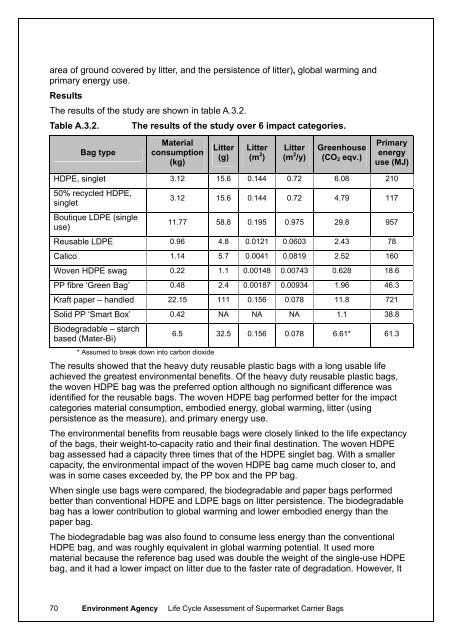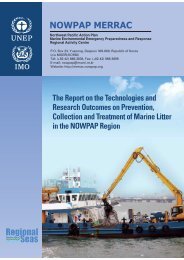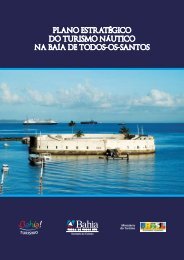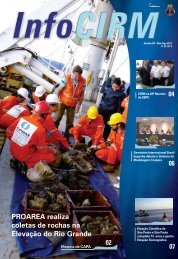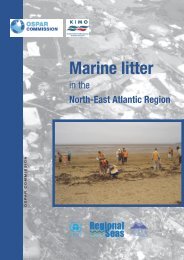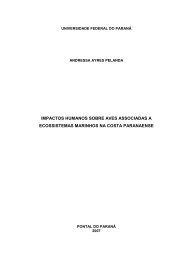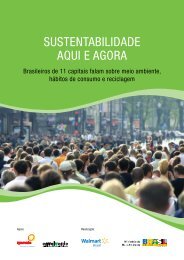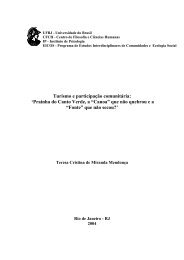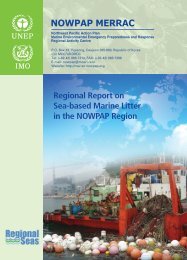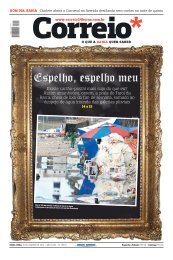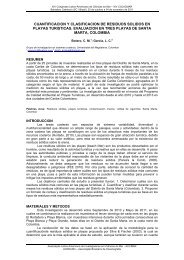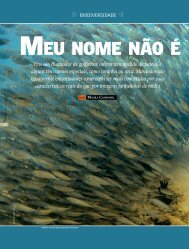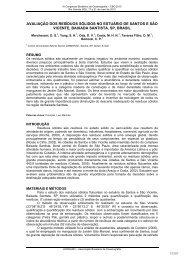Life Cycle Assessment of Supermarket Carrier Bags - Save The ...
Life Cycle Assessment of Supermarket Carrier Bags - Save The ...
Life Cycle Assessment of Supermarket Carrier Bags - Save The ...
You also want an ePaper? Increase the reach of your titles
YUMPU automatically turns print PDFs into web optimized ePapers that Google loves.
area <strong>of</strong> ground covered by litter, and the persistence <strong>of</strong> litter), global warming andprimary energy use.Results<strong>The</strong> results <strong>of</strong> the study are shown in table A.3.2.Table A.3.2.<strong>The</strong> results <strong>of</strong> the study over 6 impact categories.Bag typeMaterialconsumption(kg)Litter(g)Litter(m 2 )Litter(m 2 /y)Greenhouse(CO 2 eqv.)Primaryenergyuse (MJ)HDPE, singlet 3.12 15.6 0.144 0.72 6.08 21050% recycled HDPE,singletBoutique LDPE (singleuse)3.12 15.6 0.144 0.72 4.79 11711.77 58.8 0.195 0.975 29.8 957Reusable LDPE 0.96 4.8 0.0121 0.0603 2.43 78Calico 1.14 5.7 0.0041 0.0819 2.52 160Woven HDPE swag 0.22 1.1 0.00148 0.00743 0.628 18.6PP fibre ‘Green Bag’ 0.48 2.4 0.00187 0.00934 1.96 46.3Kraft paper – handled 22.15 111 0.156 0.078 11.8 721Solid PP ‘Smart Box’ 0.42 NA NA NA 1.1 38.8Biodegradable – starchbased (Mater-Bi)* Assumed to break down into carbon dioxide6.5 32.5 0.156 0.078 6.61* 61.3<strong>The</strong> results showed that the heavy duty reusable plastic bags with a long usable lifeachieved the greatest environmental benefits. Of the heavy duty reusable plastic bags,the woven HDPE bag was the preferred option although no significant difference wasidentified for the reusable bags. <strong>The</strong> woven HDPE bag performed better for the impactcategories material consumption, embodied energy, global warming, litter (usingpersistence as the measure), and primary energy use.<strong>The</strong> environmental benefits from reusable bags were closely linked to the life expectancy<strong>of</strong> the bags, their weight-to-capacity ratio and their final destination. <strong>The</strong> woven HDPEbag assessed had a capacity three times that <strong>of</strong> the HDPE singlet bag. With a smallercapacity, the environmental impact <strong>of</strong> the woven HDPE bag came much closer to, andwas in some cases exceeded by, the PP box and the PP bag.When single use bags were compared, the biodegradable and paper bags performedbetter than conventional HDPE and LDPE bags on litter persistence. <strong>The</strong> biodegradablebag has a lower contribution to global warming and lower embodied energy than thepaper bag.<strong>The</strong> biodegradable bag was also found to consume less energy than the conventionalHDPE bag, and was roughly equivalent in global warming potential. It used morematerial because the reference bag used was double the weight <strong>of</strong> the single-use HDPEbag, and it had a lower impact on litter due to the faster rate <strong>of</strong> degradation. However, It70 Environment Agency <strong>Life</strong> <strong>Cycle</strong> <strong>Assessment</strong> <strong>of</strong> <strong>Supermarket</strong> <strong>Carrier</strong> <strong>Bags</strong>


